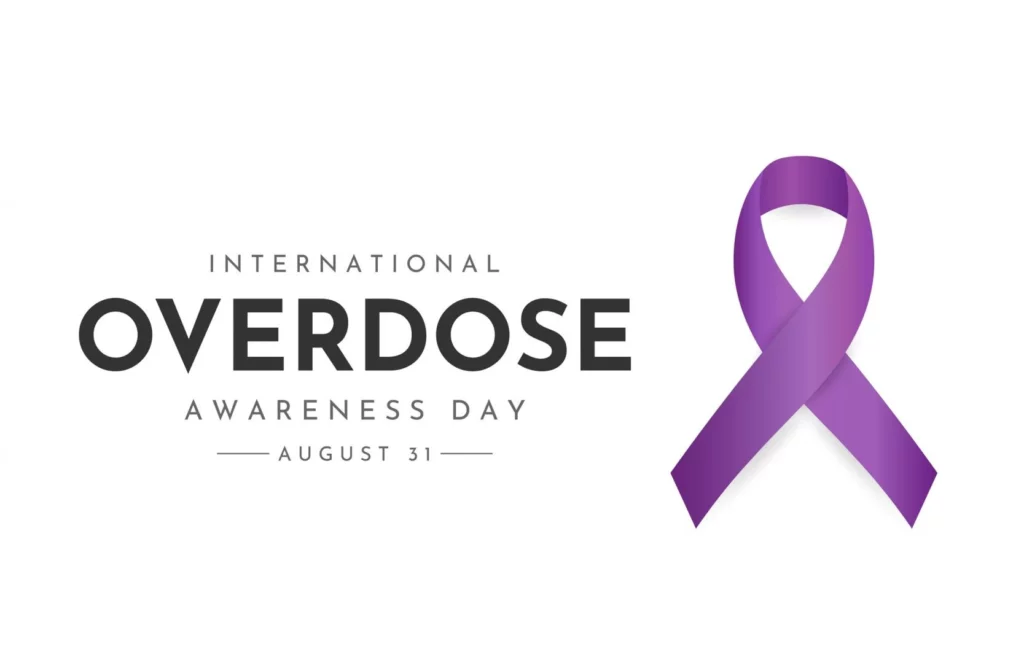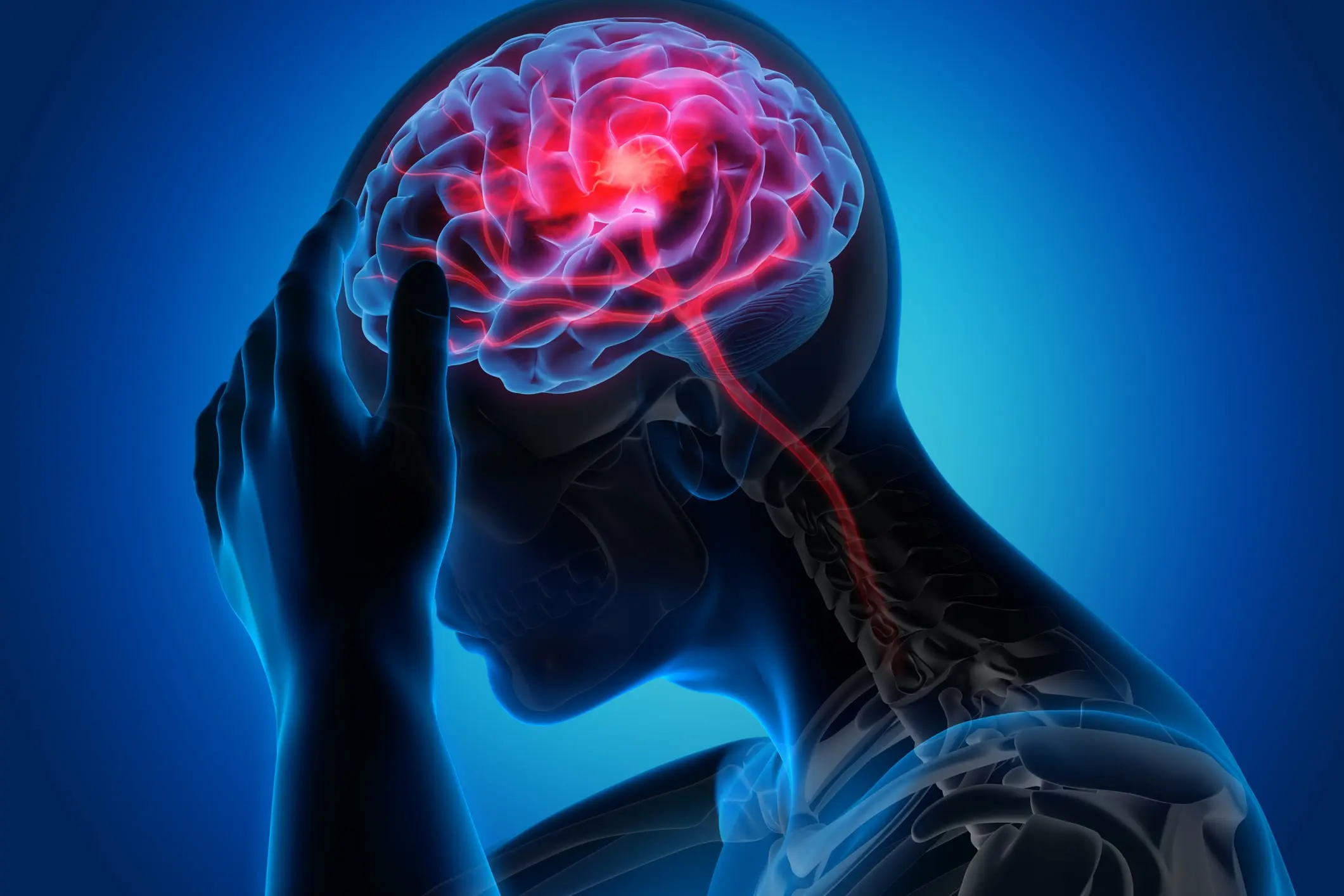In the intricate tapestry of global health challenges, addiction, and overdose are threads that touch almost every society.
This article delves into International Overdose Awareness Day (IOAD) and the myriad global strategies and initiatives to address the overdose epidemic.
From understanding its origins to exploring holistic approaches to recovery and prevention, we aim to shed light on the collaborative endeavors and innovations paving the way to a safer, more empathetic world.
Join us as we explore this pressing issue, remembering lost lives and highlighting the hope-filled paths toward change.
The Importance of International Overdose Awareness Day (IOAD)
International Overdose Awareness Day (IOAD) is commemorated every year on August 31st to raise awareness about drug overdoses and the tragic loss of life they cause.
Initiated in Melbourne, Australia, in 2001 by Sally J. Finn and Peter Streker, IOAD began as a small event to remember those lost to overdose.
The day has since burgeoned into a global movement, uniting communities from various corners to reduce the stigma associated with drug-related deaths and emphasize the need for preventative measures.1
Importantly, IOAD endeavors to dismantle the stigma associated with substance use disorders.
By fostering environments that encourage open conversations, it hopes to shift societal perceptions, replacing judgment with understanding and empathy.
Through this initiative, communities are encouraged to reflect, remember, and advocate for change to mitigate the devastating impact of overdoses.
CAMPAIGNS, EVENTS, AND ACTIVITIES ALIGNED WITH IOAD
International Overdose Awareness Day (IOAD) is supported by campaigns, events, and activities that help spread its message.
Candlelight vigils held worldwide serve as a reminder of those who have lost their lives. At the same time, community forums and workshops provide opportunities for learning and discussing overdose prevention.
Many organizations use social media to launch campaigns, sharing personal stories, statistics and calls to action through hashtags and digital storytelling.
Educational sessions about Naloxone, a medication that can reverse opioid overdoses, are also frequently organized.
Public art installations, mural paintings, and memorial walks provide platforms for reflection and advocacy.
These diverse activities foster global unity and ensure that the conversation around overdose prevention remains impactful.
Understanding the Overdose Crisis
WHAT IS AN OVERDOSE?
An overdose occurs when someone consumes a substance above what their body can safely handle, leading to harmful and deadly consequences.
This problem is not limited to illegal drugs.
Prescription medications, including opioids, benzodiazepines, and certain sedatives, have significantly affected the worldwide overdose crisis.
Alcohol can also be a culprit, especially when combined with other substances.
STAGGERING STATISTICS
The issue of overdose deaths has a significant global impact, with staggering statistics highlighting its magnitude.
According to the World Health Organization (WHO), drug use causes around 0.5 million deaths annually.
More than 70% of these deaths are related to opioids, substantially affecting health worldwide.
The National Institute on Drug Abuse states that drug overdose deaths involving heroin significantly increased over the years, reaching 15,482 deaths in 2017 before gradually declining.
Opioids account for two-thirds of drug overdose deaths globally, and estimates suggest that the number of people using opioids has doubled from 26-36 million.
In the United States alone, drug overdose deaths have increased by 58% since 2019, resulting in 98,268 deaths in 2021.2
These alarming statistics emphasize the urgent need for comprehensive strategies and interventions to prevent overdose deaths, improve access to addiction treatment, and address the underlying factors contributing to this global public health crisis.
FACTORS CONTRIBUTING TO THE GLOBAL OVERDOSE CRISIS
The alarming statistics and increasing trends of the global overdose crisis highlight the many challenges of substance use.
Every year, hundreds of thousands of people suffer from drug overdoses, and this number continues to grow.
There are many factors contributing to this epidemic.
Firstly, the opioid crisis has been fueled by the over-prescription of painkillers, leading many to transition to more dangerous drugs like heroin.
Secondly, synthetic drugs like fentanyl have added an even more dangerous dimension to the crisis, as they are often mixed with other substances and can be fatal.
Socioeconomic factors also play a significant role, as marginalized communities and those with limited access to treatment are often hit the hardest.
Lastly, the stigma surrounding substance use and mental health issues is a significant barrier to open dialogue, seeking help, and effective interventions.
Common Drugs That Lead to Overdose
| Drug Name | Description | Overdose Symptoms |
|---|---|---|
| Opioids (e.g., Heroin, Fentanyl) | Opioids are drugs derived from the opium poppy or synthesized to mimic its effects. They are commonly used for pain relief but have high addiction potential. | Shallow or stopped breathing, pinpoint pupils, unconsciousness, blue lips and nails, limp body, gurgling noises. |
| Benzodiazepines (e.g., Xanax, Valium) | Benzodiazepines are sedative medications primarily prescribed for anxiety, seizures, and muscle relaxation. They enhance the effect of the neurotransmitter GABA, leading to sedation. | Drowsiness, confusion, impaired coordination, slowed or stopped breathing, coma, and possible death if combined with other depressants. |
| Stimulants (e.g., Cocaine, Methamphetamine) | Stimulants elevate mood, increase energy, and make users feel more alert. They speed up the body’s systems, increasing heart rate and blood pressure. | Rapid heartbeat, elevated body temperature, dilated pupils, agitation, confusion, seizures, paranoia, hallucinations. |
| Alcohol | A depressant that affects the central nervous system, alcohol can lower inhibitions, impair judgment, and slow down bodily reactions. It’s consumed in beverages like beer, wine, and spirits. | Confusion, vomiting, seizures, slow or irregular breathing, unconsciousness, hypothermia, bluish skin, low body temperature. |
DEMOGRAPHICS
The issue of overdoses affects the world, but it is more pronounced when demographics and geography are considered.
North America, especially the United States, has been deeply affected by the opioid crisis, which has led to an exponential increase in overdose deaths.
Opioids like fentanyl and its analogs claim tens of thousands of lives yearly.
Canada also experiences a significant number of opioid-related overdoses.
Countries like the UK, Germany, and France report high overdose rates in Europe, although the substances used may vary.
In Asia, countries such as Russia and some Central Asian nations are struggling with rising overdose rates, often linked to heroin and other opiates.3
It is important to note that urban areas and specific demographic groups, such as marginalized populations, may be disproportionately affected.
Additionally, socioeconomic status, mental health, and access to healthcare play a role in these disparities.
The landscape of overdose demographics and geographies constantly changes and requires ongoing monitoring and adaptation of intervention strategies.
The Stigma Surrounding Overdose and Addiction
The stigma towards addiction and overdose is a significant obstacle to solving the global drug crisis.
These attitudes are rooted in societal misconceptions about substance use, leading to a culture of silence and shame that affects those struggling with addiction.
Many people view addiction as a personal failing rather than a health issue, which can make those affected feel guilty and isolated.
This stigma also causes people to avoid seeking help out of fear of judgment or rejection.
Additionally, because of this stigma, there is often underreporting of drug use and overdose incidents, leading to inaccurate data that doesn’t accurately reflect the scope of the problem.
This bias also affects policy decisions and funding, leading to a lack of support for comprehensive recovery and harm-reduction programs, which makes it harder to find practical solutions to addiction.

Breaking the Stigma With Compassion and Understanding
It is crucial to break the deep-rooted stigma attached to substance use disorders.
This is not only for the well-being of individuals affected but for society.
Stigmatization can manifest in several ways, such as isolating individuals, making them feel ashamed, and discouraging them from seeking critical help.
These societal judgments can severely impact individuals, exacerbating their problems and leading to a cycle of relapse and isolation.
On the other hand, adopting a compassionate and understanding approach can be transformative.
Changing societal attitudes towards addiction and mental health can have far-reaching benefits.
A society that empathizes with these issues is more likely to invest in comprehensive prevention, treatment, and recovery programs.
Moreover, replacing judgment with support creates an environment where individuals feel safe to share their struggles, seek help, and contribute positively to the community.
Ultimately, promoting compassion and understanding can pave the way for holistic healing at an individual and collective level.
Overdose Prevention Strategies
Preventing overdoses, which contribute to the rising number of drug-related deaths, requires a combination of strategic interventions.
Education and awareness are essential, as an informed public can identify signs of overdose, comprehend the dangers of substance use, and make safer decisions.
Naloxone is a lifesaving tool in counteracting opioid overdoses, as it serves as an antidote that can reverse the effects of an overdose.
By distributing Naloxone widely and providing training on how to use it, countless lives can be saved during moments of crisis.
Additionally, establishing safe injection sites creates controlled environments where individuals can use drugs under medical supervision, significantly decreasing the chances of an overdose and reducing other drug-related harms.
Ensuring access to evidence-based addiction treatment is crucial, as it’s not just about ending drug use but also understanding and addressing the underlying causes.
Finally, mental health must be a priority in these discussions, as integrative approaches that include mental health support and counseling acknowledge the intricate connection between mental well-being and substance use, promoting comprehensive healing and long-term recovery.
| Strategy | Description |
|---|---|
| Education and Awareness | By providing accessible and accurate information about substance use risks, recognizing signs of overdose, and methods of intervention, education becomes a primary tool for prevention. Increasing awareness empowers communities to act proactively and safeguard individuals against potential harm. |
| Naloxone Distribution and Training | Naloxone, an opioid antagonist, can reverse the effects of an opioid overdose. Distributing this lifesaving medication and offering training on its administration ensures timely intervention, significantly reducing fatality risks associated with opioid overdoses. |
| Safe Injection Sites and Harm Reduction | Safe injection sites are supervised medical facilities where individuals can consume drugs under professional monitoring. These sites minimize overdose risks and reduce the transmission of infectious diseases. Coupled with harm reduction approaches, such as providing clean syringes, they offer a compassionate response to substance use. |
| Access to Evidence-Based Addiction Treatment | Ensuring individuals have access to evidence-based treatment options tailored to their needs is crucial. These treatments, grounded in scientific research and clinical expertise, can effectively address the root causes of addiction and offer long-term recovery solutions. |
| Mental Health Support and Counseling | Mental health and substance use are intricately linked. Offering dedicated mental health support and counseling provides individuals with tools to manage co-existing disorders, navigate emotional challenges, and develop resilience, thereby reducing the likelihood of overdose. |
Global Initiatives and Actions
Around the world, there are many efforts to combat drug overdose.
From busy cities to quiet towns, individuals and organizations are working hard to raise awareness about this issue.
They do this through campaigns, workshops, educational programs, and public interventions.
The goal is to give communities the knowledge and resources they need to prevent overdoses.
Some places have made significant progress in this area.
For example, Portugal decriminalized all drugs in 2001 and has seen a decrease in drug-related deaths thanks to harm reduction strategies.4
Vancouver, Canada, has also made strides with its safe injection sites.
These success stories prove what can happen when communities come together with a shared vision of awareness, prevention, and care.
Promoting Healing and Recovery
Many things must be considered when helping people recover from substance use disorders.
It’s important to understand that addiction is complex and has no straightforward solution.
The most effective way to support someone in their recovery is to create a personalized plan that considers their unique needs.
This plan should include medical interventions and holistic approaches focusing on their physical, mental, and emotional well-being.
For example, things like mindfulness, yoga, and counseling can be helpful in addition to medical treatments.
It’s also essential for people in recovery to have access to community resources and peer support networks.
These things can provide a sense of belonging and a space to share experiences, struggles, and successes.
Recovery isn’t always easy, but it’s essential to have the support of family and friends.
Their understanding, patience, and encouragement can make all the difference in helping someone stay on track and build a brighter, substance-free future.
Holistic Approaches to Healing
| Approach | Category | Description |
|---|---|---|
| Yoga | Physical | Yoga combines physical postures, breath control, and meditation to enhance flexibility, strength, and mental tranquility. Regular practice can offer relief from stress, improve physical health, and foster mindfulness. |
| Meditation | Mental | Meditation is a practice where individuals focus their minds to achieve a mentally clear and emotionally calm state. It aids in reducing anxiety, enhancing self-awareness, and developing a positive perspective towards life. |
| Art Therapy | Emotional | Art therapy employs creative methods like drawing, painting, or sculpting to help individuals express themselves, process traumatic events, and develop emotional resilience. It provides a safe outlet for expressing feelings and can be therapeutic for those battling addiction or trauma. |
| Acupuncture | Physical | Acupuncture involves inserting needles into specific points on the body to stimulate energy flow. It can alleviate pain, reduce stress, and restore balance within the body, contributing to overall wellness. |
| Cognitive Behavioral Therapy (CBT) | Mental | CBT is a form of psychotherapy that targets negative patterns of thought. By identifying and challenging these patterns, individuals can develop healthier behaviors and coping strategies, crucial for those dealing with substance use or mental health disorders. |
| Journaling | Emotional | Journaling is the practice of writing down thoughts, feelings, and experiences. It provides a reflective space for individuals to process emotions, track recovery progress, and gain insights into their behavioral patterns. |

How to Get Involved
Getting involved in the fight against overdose and supporting addiction awareness is admirable and essential.
One way to do this is by participating in events and activities for International Overdose Awareness Day (IOAD), which aims to raise awareness, honor those who have passed away, and educate people on preventing overdose.
You can also consider volunteering with organizations dedicated to overdose prevention, where your time and skills can directly impact outreach, support, and education efforts.
Advocacy is also crucial – by advocating for local, state, or national policy changes, individuals can help ensure that addiction treatment and mental health services are adequately funded, recognized, and accessible.
Working together through collective action and commitment, we can significantly reduce the number of overdoses and create more compassionate communities.
The Path to a Safer and Healthier Future
The road to a safer and healthier future for those struggling with addiction and overdose requires innovation, collaboration, and unwavering commitment.
Thanks to continuous advancements in addiction treatment and overdose prevention techniques, there is renewed hope for those with substance use disorders.
Modern therapies are becoming increasingly personalized and effective, and tools like Naloxone save lives during real-time overdose scenarios.
However, the magnitude of the overdose crisis demands collective action.
Governments, healthcare providers, community organizations, and citizens must combine resources, knowledge, and energy.
With such collaborative efforts, targeted interventions can be implemented, resources can be optimized, and communities can be educated on a large scale.
The long-term objective is clear: dramatically reducing overdose-related deaths worldwide, if not eliminating them.
By steadfastly pursuing this goal, society moves closer to a future where addiction is understood, treated, and prevented rather than stigmatized and ignored.

Remembering Lost Love Ones
Through the lens of prevention strategies, holistic healing, and collaborative global initiatives, the narrative underscores the pressing need for awareness, action, and empathy.
As we stand on the cusp of hope and transformation, it’s imperative to remember and honor every life tragically cut short by overdose.
Their stories serve as poignant reminders of our collective responsibility and potential to forge a future where addiction is met with understanding, and those struggling find paths to healing and recovery.
CONSIDERATIONS
The International Overdose Awareness Day (IOAD) website provides a platform for individuals to post tributes to honor loved ones who have passed away due to overdose.
This service is free of charge and offers a way to memorialize those who were lost too soon.
Although nothing can bring back a lost loved one or ease the pain of their absence, it is essential to remember that you are not alone and resources are available to help keep their memory alive.
Cornerstone Healing Center extends our condolences to you during this difficult time.
There’s always hope when facing addiction. If you or someone close to you needs support, Cornerstone Healing Center in Scottsdale, AZ, is here to help. Our holistic approach ensures a meaningful and lasting recovery, reminding everyone that brighter days are ahead. Let us help you today!








